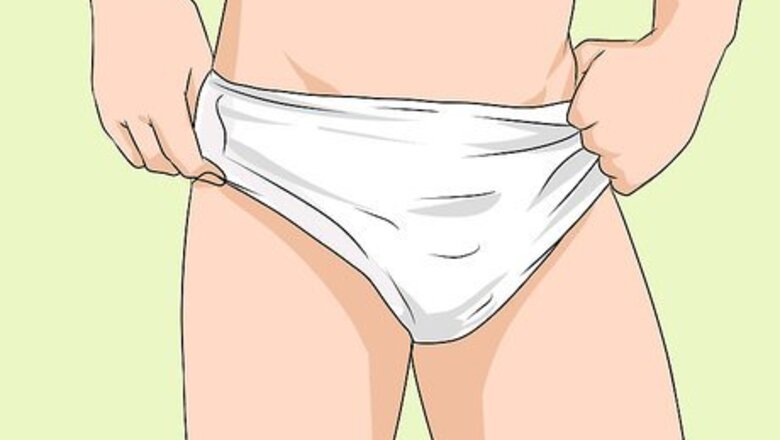
views
Putting on a Dance Belt
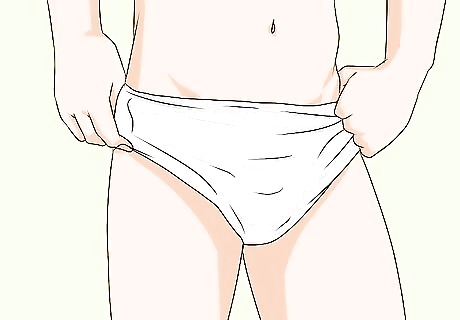
Give yourself ample time to put on and adjust the belt. When putting on a dance belt, take as much time as you need to get all your parts placed where you want and as comfortable as possible. Once the belt is on, nothing is supposed to move until you take it off.
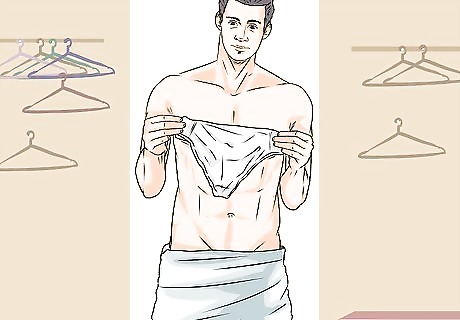
Grab the dance belt and hold it facing forward. Remove all your clothes in the dressing or change room and pick up your dance belt. You will know it's facing forward because the V-shaped cloth that covers your genitals is in front of you, while the string is closest to your genitals.
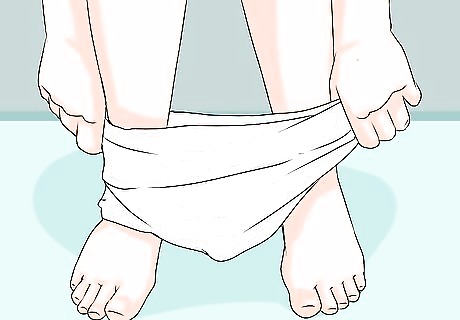
Step into your dance belt. Do this as you would if putting on a pair of underpants, one leg at a time. The right leg should be on the right side of the belt and your left should be on the left side.
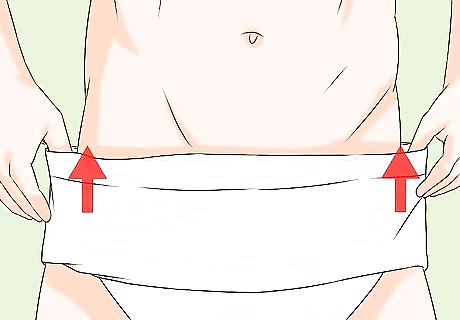
Pull your dance belt up around your waist or hips. Pull it up to the height at which you wear your pants. Do not wear it low with the goal of keeping the thong part loose; this will only cause trouble down the line.
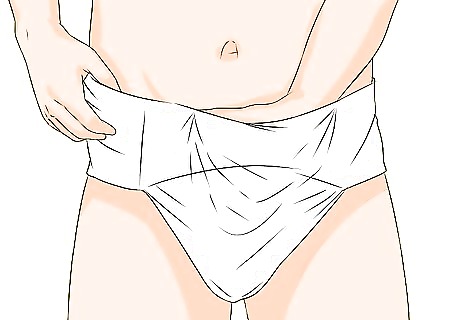
Adjust your genitals forward and upward. Reach your hand down inside the dance belt to “scoop” your scrotum and penis upwards inside the supportive pouch. Guide all of the hanging parts straight up to point towards 12 o'clock; your penis will end up pointing upwards and resting against your lower abdomen, while your two testicles will be up in front, not dangling between your legs. The fabric panel will hug and securely cradle everything in place. If the thong part feels overly tight, adjust by pulling it slightly lower, but keep some tension to hold everything in place. When properly positioned, the genitals are held closely and firmly to the lower torso in a raised orientation. This is in contrast to most athletic supporters, which leave the genitalia hanging downwards. If anything feels uncomfortable, adjust it now. You won't be able to do this later, especially if you’re wearing an elaborate costume that covers your lower torso. You might feel some unfamiliar pressure in your nether region at first, but you will get used to the feeling (and hardly notice it) after a few hours. You'll eventually appreciate the ability to jump, leap, and move without any concern for soreness or discomfort.
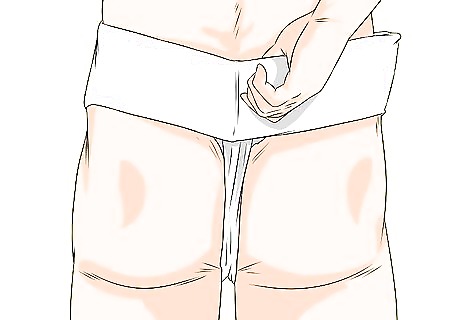
Situate the thong between your buttocks as comfortably as possible. Adjust the height of the waistband so that it sits even with or slightly over the crest of your hip bones. The thong strip should have a good bit of tension, otherwise the belt will not be a good shock absorber when jumping (e.g. ballet changements and sautes). The thong should never fit loosely underneath. It may feel more comfortable when worn loosely, but it will not provide effective, reliable support to the genitalia and defeats the main purpose of wearing a dance belt in the first place.

Pull on your tights and the other parts of your costume. Make sure you feel comfortable before leaving the change room. You want to feel confident, comfortable and well supported before you begin your dance, skate, or other activity! If your tights or whatever you're wearing has a seam running down the center middle of your lower torso, adjust it so the seam line is balanced evenly left and right, side to side (a centered bulge is aesthetically preferred for most performances). In performances, particularly ballet, readjusting the belt or costume is considered bad form when the audience can see this. This is why you should take care accordingly to get all of the adjustments right before you head out on stage.
Launder your dance belt in cold water after every use. For hygienic reasons, avoid reusing a dance belt after a rehearsal or performance (it would be the same as re-wearing underwear after a workout). Spandex and stretchy fabrics can get damaged in hot water, so wash the belt with cold water on a delicate cycle and air dry it for the best results.
Choosing a Dance Belt

Opt for a T-strap design for the most aesthetic appearance. Most dance belts are similar to thong underwear, but with sturdier fabric and a thicker waistband so the flesh at the waist is not pinched. The back of the waistband is connected by a thin strip of elastic that is strapped to the bottom of the front triangular panel that covers the genitalia. This strip passes between the wearer's legs and fits between the two buttocks for support and a smooth appearance of the glutes. This is described as a T-back design. The T-back design is the most popular dance belt since they don't show underwear lines or cover your buttocks (so the glutes and hamstring muscles aren't restricted). Because the thong doesn't cover any muscles, it will not move around during rapid or vigorous movements. Some manufacturers make full seat or “comfort” dance belts. These types are less aesthetically pleasing as they often show underwear lines. Athletic supporters or jock straps also provide active males with support. Unlike the dance belt, these supporters have a pair of elastic straps that meet the bottom of triangular fabric at the front. They pass between the legs and encircle the thighs just below and on each side of the buttocks. These straps are visible when wearing form-fitting tights, whereas dance belts avoid these lines by eliminating the rear pair of straps and replacing them with a single thong strap.
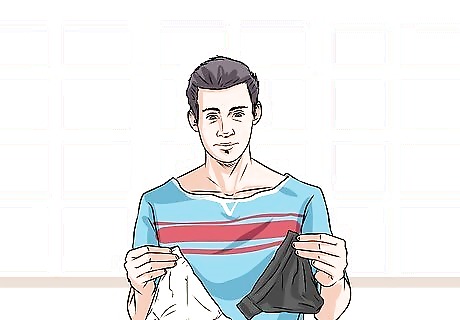
Choose a flesh-toned dance belt that matches your skin tone. In general, the go-to and most popular color is nude or “tan” for white dancers or darker shades of brown for darker-skinned dancers. If you can’t find a shade that exactly matches your skin, you can dye your dance belt darker. The belt can then be worn under black practice tights or white performance tights. In fact, a beige or flesh tone dance belt is more invisible under white tights than a white one. Dance belts are also produced in white and black. The color and the finish of the fabric used for making tights affects the appearance of the person wearing them. Light-colored tights, such as white, light gray, yellow, light blue, and taupe, can make the shape and contour of a man's bulge more distinctive than darker colors because of the way stage lights create shadows. Darker tights, on the other hand, are less revealing, especially in a flat or matte finish.
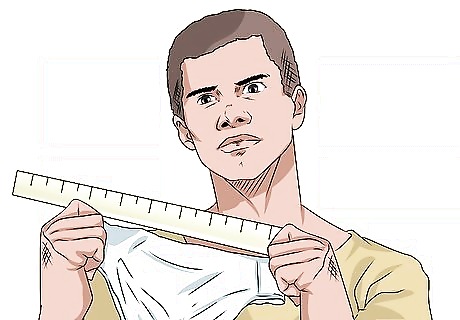
Wear a size that's snug and not too loose. Dance belts are measured by waist size and come in general sizes like small, medium, and large. Although most dance stores don't carry a very wide selection of men's dancewear, most should have a small section of men's tights and dance belts. Even though dance belts are a specific product for men, dance clothing manufacturers have not standardized the waist sizes. So, a medium by one brand may be slightly different than a medium by another. Most dance belts cost about $30 and can also be found online.
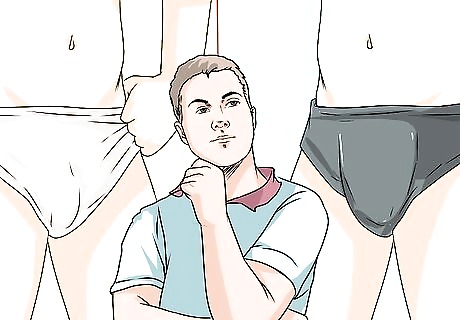
Pick a padded front panel for comfort or a smoother look, if desired. Most dance belts have two thin layers of stretchy fabric for the triangular panel, while some styles also incorporate a thin layer of triangular padded material. Whether you pad the front is entirely up to how it feels and looks to you. The front triangular support pouch is usually made of layers of spandex or similar fabric. You can also buy dance belts with a thin layer of light, non-bulky padding material incorporated in order to effect an even more smoothed, discreet bulge.
















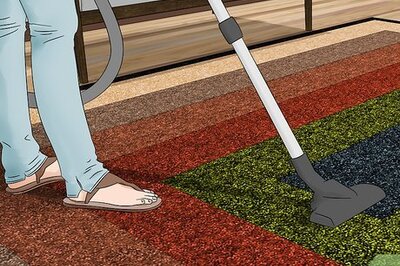

Comments
0 comment